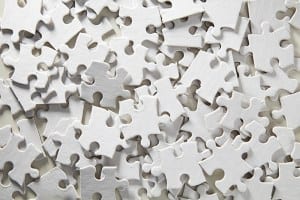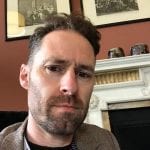As my Fellowship has begun to take shape, I have been thinking of the complexity of the data and how it can be broken down and simplified. Previously my approach has been quite reductionist, breaking things down to their simplest form in order to study them. It gives you a very detailed picture of one piece of whatever particular ‘puzzle’ that you happen to be working on, but it is at best, just one piece. Even if you were lucky enough to discover every piece of the puzzle separately over the years, it can often prove impossible to put the whole puzzle together as the pictures start to change once pieces are connected. Imagine that thousands of other scientists are working on the same puzzle across the world, and that in most cases, the puzzle is so complex that few of you will ever come close to finishing your piece. Now imagine that there are an almost limitless number of different puzzles that all connect together to form one big puzzle.

During this project I have decided to take a different approach and look at the problem in a lower definition. By looking at the whole picture from a distance I hope to get an overall idea of what it is and how it is made rather than the specific details. It’s a bit like starting with a complete, but simple jigsaw and and examining how the pieces have already been put together I’ve been researching Forest Bathing (Shinrin-Yoku) over the last few weeks as it fits in with some areas of my work If we were to take this as our jigsaw, what would it look like? How do the basic pieces fit together?
Originating in in Japan , Shinrin-Yoku is practised as a way of alleviating stress. By spending time in dense green spaces like forests, practitioners experience several health benefits, including positive effects on mood, metabolism, cardiac health and fatigue. But what is it about the forest that causes these effects? Is it the simple act of walking with nature taking in the sights and gentle sounds of the forest? Do volatile organic compounds given off by trees alter our own moods? Is it exposure to specific types and colours of light as they make their way through the forest canopy? The relative homeostasis in temperature, humidity and stillness a forest provides allows us head space and the chance to wander with no real destination or purpose; does this help refresh and relax the mind and body. Each one of these could make up one of the pieces of our puzzle. We could spend years examining if one particular chemical released by one type of tree had a specific biological effect on a specific type of human cell. Maybe if we were lucky, we could link this directly to a biological mechanism by which it could bring about this effect. We might even get to the stage where we were able to see how this particular chemical caused physiological changes in a real group of people in an actual forest. In short, we’d not get very far with one particular piece of the puzzle.

However, if we look at the whole picture from a distance can we get some idea of how the pieces make the puzzle? Since my fellowship is looking at light, I’m going to be a little more focused and only look at the role of light in this particular puzzle. I’m also going to be looking at forests and the environments that surround them, including bodies of water, agriculture and general green space. Over the last few months I’ve been testing a few bits of equipment for measuring different types of light in both the visible and non-visible spectrum and have been trying to put together a list of people that I’d like to interview about the environments that inspire their writing. The interviews will hopefully take place in these settings too with the writer guiding me through the area with the aid of their writings. I intend for these interviews to go on to form a small series of podcasts. At the same time, I’ll be attempting to take various light readings and use the data to accompany the podcasts. Through this I’m hoping to explore the connection between the visual aspects of what we see in nature and the non-visual elements of light that we sense through other means and by adding this extra element to what the writer experiences, open up new areas to explore. If this sounds like something that you’d be interested in contributing to, then please do get in touch.
Although this new found focus has been productive, there were so many other pieces of the jigsaw that that I left in the box in order to get here. Hopefully I can start to work on some of them again before this fellowship comes to an end. A good jigsaw is one that you can come back to again and again.

